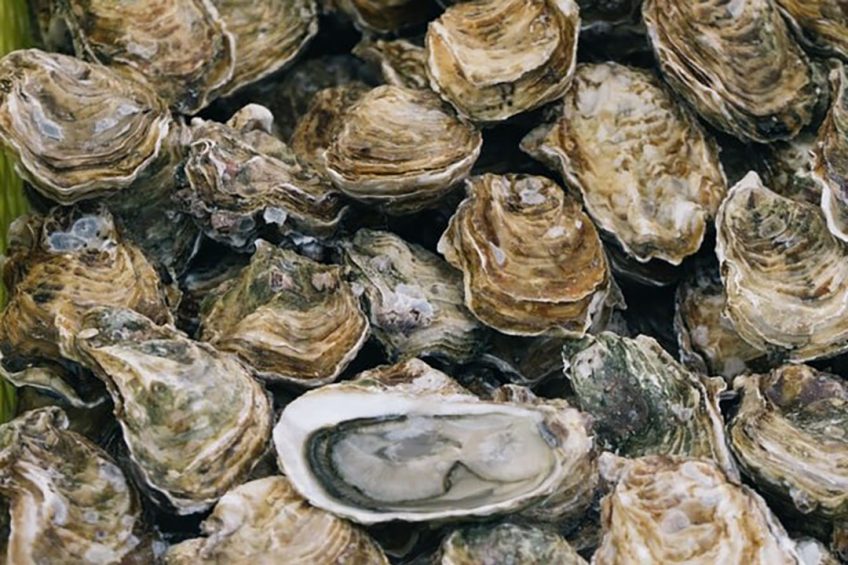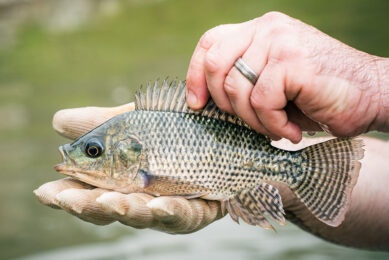Novel bivalve feed to address human nutrient deficiencies

There is huge potential to sustainably expand bivalve aquaculture production worldwide. Innovations using novel microencapsulated feed could mean that this highly attractive yet underutilized food source could provide the global population with key nutrients.
This is according to a study that conducted bivalve nutritional fortification experiments at the University of Cambridge under conditions to simulate commercial depuration protocols.
Nutrient-dense and sustainable
Not only are bivalve shellfish – such as clams, oysters, mussels and scallops – high in protein, omega-3 fatty acids and key minerals, but they provide the most sustainable source of animal protein on the planet, according to the researchers, adding that the market is growing rapidly. There is potential to expand bivalve aquaculture worldwide, with more than 1,500,000 square kilometres available for sustainable low-cost industry development.
Micronutrient deficient populations
More than 2 billion people worldwide are micronutrient deficient, notes the World Health Organization. And, although bivalves are nutrient-rich, the level of nutrients they deliver naturally is unlikely to solve global nutrient deficiencies, but innovations in bivalve production can change this.
Integrating nutrients into the bivalve
During the ‘depuration’ stage of bivalve production, bivalves are held in cleansing tanks for 48 hours after harvest. It is at this stage that innovations are integrating nutrients into the bivalve gut and surrounding tissue, which all form part of the organism that is eaten by humans, thereby making these nutrients available to humans. This micronutrient fortification could allow the levels of a specific nutrient, such as vitamin A or D, to be increased in the food supply to meet specific regional needs, presenting an opportunity to tackle nutrient deficiencies.
Microencapsulated bivalve feeds
Novel microencapsulated feeds, manufactured by BioBullets, are digestible by bivalves and can provide a delivery vehicle for micronutrients, and because specific nutritional content of the microcapsules can be tailored, microcapsules can contain only the micronutrients required by a specific market.
Study of microencapsulated feeds in oysters
Pacific oysters were selected as a case species, due to their sustainable production and economic importance as the most widely cultivated bivalve globally. In the study, each oyster was fed a 50:50 blend of both vitamin A and D microcapsules at doses and timeframes feasible during the 48-hour depuration period.
There were 105 individual tanks, allowing for 5 biological replicate oysters to be fed microcapsules at doses of 3, 6 and 9% dry weight feed per dry weight oyster over 2, 4, 8, 16 and 32 hours, alongside 0 and 32-hour controls at doses of 0%.
The successful fortification of bivalves
Feeding micronutrient microcapsules under depuration conditions led to the successful fortification of bivalves. “We suggest that for vitamins A and D, an optimum dose regarding feed concentration and timeframe might be 3% for 8 hours. After an 8-hour timeframe, vitamin A and D levels in oysters were higher on the 3% feed than on the 6% or 9% feed. This relationship is less surprising than first appears; when bivalves are exposed to too much food, they will reduce their feeding rate to avoid overloading the filtering system on their gill stacks,” notes the study.
An excellent source of vitamin A and D
Oysters fortified with vitamins A and D at 3% for 8 hours performed well regarding nutritional value when compared to other foods and the RDAs, notes the study. In a 100 g portion, or 3 small or 2 large oysters, fortification at the 3% 8-hour dosage resulted in vitamin A and D levels at 997 and 47 μg/100 g, respectively. This exceeds the levels in natural oysters (<10 and <0.3 μg/100g), and exceeds the levels found in one of the best natural sources of vitamin A and D – salmon (37 and 11 μg/100g). Furthermore, this same portion meets US Department of Health RDAs for vitamin A and D.
A very small cost
Based upon predicted manufacturing, distribution, and implementation costs for the microcapsules, fortification would add just US$0.0056 to the cost of a single oyster. It will also be crucial to apply the technology to other bivalve species including mussel and clam species such as green mussels and Japanese carpet shells, which are cheaper to farm in many developing regions. Completion of these steps will help enable the scale-up of micronutrient fortified microcapsules at the commercial level.
Quantitative analysis necessary
The study notes that researchers will need to carry out larger laboratory studies with a greater number of replicates to enable quantitative analysis of the individual variation in vitamin uptake by bivalves, adding that such variation is often seen in the fortification of foods including eggs and meat via dietary intervention.
“…an invaluable contribution toward improving the quality and sustainability of our global food system.”
There is also a need to assess the bioaccumulation of microencapsulated vitamins specifically into bivalve storage tissues, the impact of high-level vitamin accumulation on bivalve physiology, and whether the presence of microcapsules in the bivalve gut promotes the micellarization and absorption of vitamins in the human gut.
The researchers conclude that this study could represent “an invaluable contribution toward improving the quality and sustainability of our global food system”.
The authors of this study are Professor David C. Aldridge and Dr David F. Willer at the Aquatic Ecology Group, Department of Zoology, University of Cambridge Conservation Research Institute, the University of Cambridge in the UK. Microcapsules were manufactured and provided under license by BioBullets Ltd., UK.











